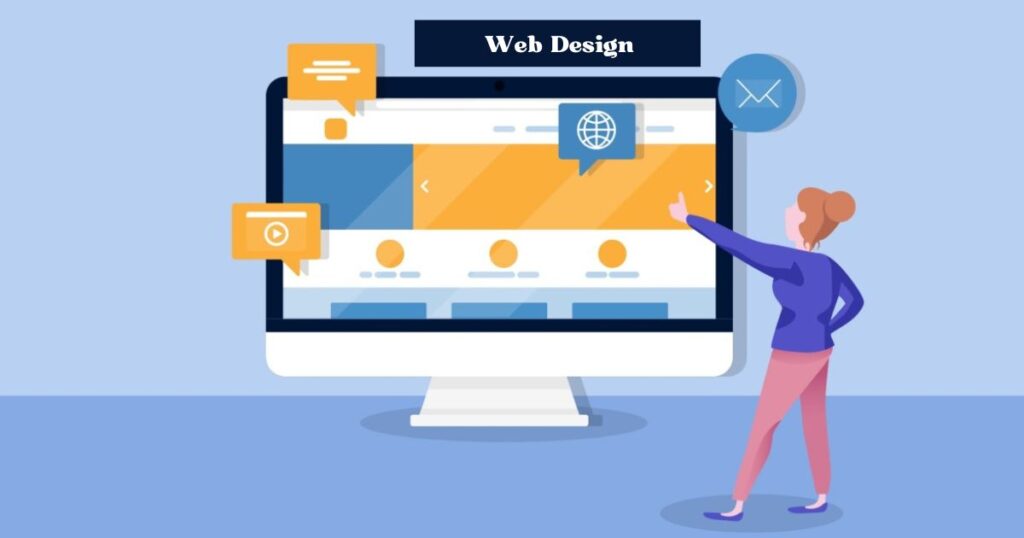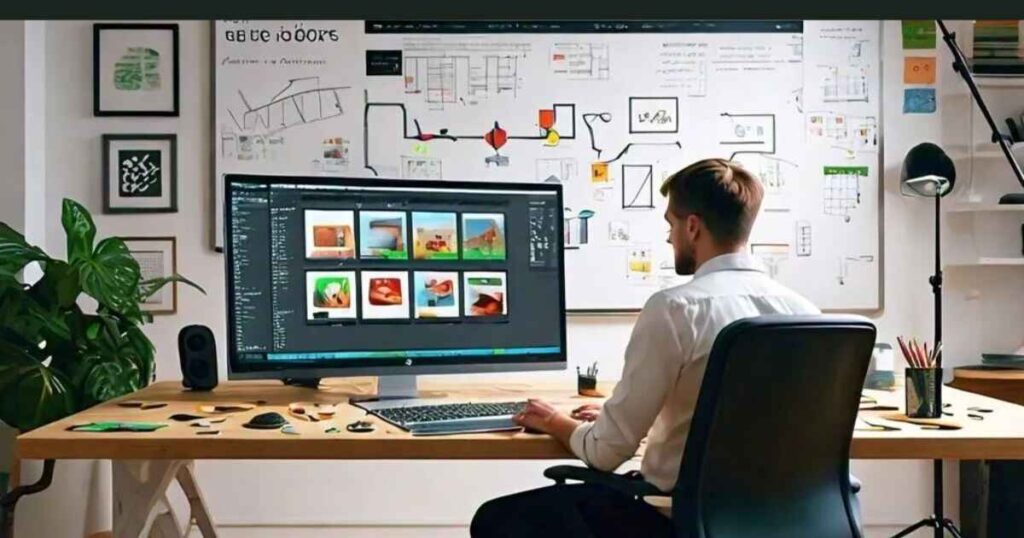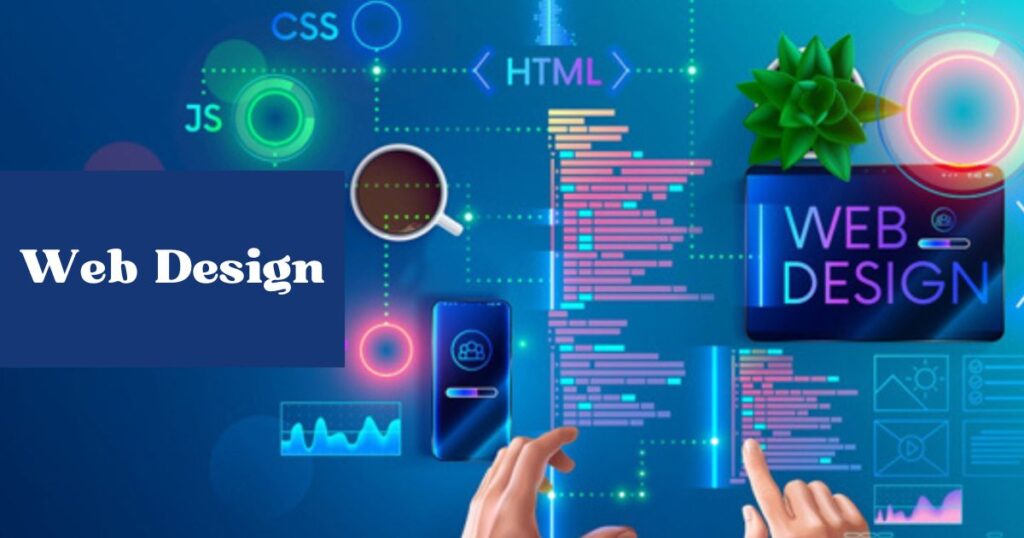The psychology of web design involves understanding how users think and behave online. It focuses on creating websites that are intuitive, engaging, and user-friendly. By using design principles rooted in psychology, businesses can enhance user experience and drive growth.
Imagine unlocking the full potential of your business through strategic web design. “The Psychology of Web Design: Unlocking Business Growth Through Digital Strategy” offers the key. With the right approach, you can transform your website into a powerful tool for success.
Incorporating psychological insights into web design can significantly impact user behavior. It can lead to increased engagement, higher conversion rates, and improved customer satisfaction. Understanding these principles is crucial for any business looking to thrive online.
The Psychology of Web Design for Business Growth: An Overview

Think of your website as a digital storefront. Just like a brick-and-mortar shop, it needs to catch the eye, invite visitors in, and guide them towards a purchase. But unlike physical stores, websites have mere seconds to make an impression.
Web design psychology is all about understanding how users think, feel, and behave when they land on your site. It’s a potent mix of visual appeal, user experience, and persuasive elements that work together to boost conversions and drive business growth.
Consider these eye-opening stats:
- 94% of first impressions are design-related
- Users form opinions about your website in just 0.05 seconds
- 75% of users judge a company’s credibility based on its website design
Clearly, the stakes are high. But fear not—we’re about to unpack the psychological principles that can transform your site from a digital wallflower to a business-boosting powerhouse.
The Power of Visual Impact
First Impressions: You’ve Got 50 Milliseconds
Imagine walking into a store that’s cluttered, poorly lit, and confusing. You’d probably turn right around and leave, right? The same principle applies to websites. Users make split-second decisions about whether to stay or bounce based on visual appeal.
Key takeaway: Your homepage needs to be visually stunning and instantly communicate your value proposition.
Color Psychology in Web Design
Colors aren’t just pretty—they’re powerful emotional triggers. Here’s a quick rundown of how different hues can influence your US audience:
| Color | Emotional Association | Brand Examples |
| Blue | Trust, stability | Facebook, PayPal |
| Red | Excitement, urgency | Coca-Cola, Netflix |
| Green | Growth, health | Whole Foods, Spotify |
| Yellow | Optimism, clarity | McDonald’s, Snapchat |
| Purple | Luxury, creativity | Cadbury, Hallmark |
But remember, context is king. A color that works for a fun toy brand might send the wrong message for a serious financial institution.
Visual Hierarchy: Guiding the User’s Eye
Ever wonder why some websites just “flow” while others feel like a jumbled mess? It’s all about visual hierarchy—the art of arranging elements to guide users through your content.
Try this:
- Use size to emphasize importance (bigger = more important)
- Employ contrast to make key elements pop
- Utilize white space to create breathing room and focus attention
By mastering visual hierarchy, you’re essentially holding your visitor’s hand and leading them exactly where you want them to go.
Crafting an Optimal User Experience
User experience (UX) isn’t just a buzzword—it’s the secret sauce that can make or break your website’s success. Think of UX as the digital equivalent of customer service. A smooth, intuitive experience keeps users happy and coming back for more.
The Link Between UX and Business Success
Consider this: a well-designed user interface could raise your website’s conversion rate by up to 200%. That’s not just a statistic—it’s a game-changer for your bottom line.
Cognitive Load Theory: Keep it Simple, Stupid
Here’s a brain-bending fact: the human brain can only process about seven pieces of information at once. Overload your users with too many choices or complex information, and they’ll bounce faster than you can say “information overload.”
The solution? Embrace simplicity. Break complex processes into digestible steps. Use progressive disclosure to reveal information as needed. Your users’ brains (and your conversion rates) will thank you.
The Psychology of Decision-Making Online
Ever heard of analysis paralysis? It’s what happens when too many options lead to no decision at all. To combat this, try:
- Limiting options to prevent overwhelm
- Using social proof to build trust (think customer reviews or testimonials)
- Creating a sense of urgency with limited-time offers
Remember, your goal is to make decision-making as easy and comfortable as possible for your users.
Clear Navigation
Picture this: You’re in a huge department store looking for a specific item, but there are no signs, no logical layout, and no helpful staff. Frustrating, right? That’s exactly how users feel when faced with poor website navigation.
The Paradox of Choice: Why Less is More
Psychologist Barry Schwartz famously argued that too many choices can lead to anxiety and decision paralysis. In web design, this translates to streamlined navigation menus and clear pathways to important information.
Pro tip: Stick to 5-7 main navigation items. If you need more, consider using dropdown menus or a “hamburger” menu for mobile sites.
Information Architecture and User Expectations
Users have certain expectations about where to find things on a website. For instance, they expect to find contact information in the top right or bottom of the page. Violate these expectations at your peril confused users are quick to leave.
Try this exercise: Map out your site’s structure on paper. Can you get from any page to any other page in three clicks or less? If not, it’s time to rethink your information architecture.
Intuitive Design

Intuitive design is like a good waiter it anticipates your needs before you even realize you have them. It’s about creating interfaces that feel natural and effortless to use.
Gestalt Principles in Web Design
The Gestalt principles of visual perception explain how humans naturally organize visual elements into groups or unified wholes. Here are a few key principles to keep in mind:
- Proximity: Elements close to each other are perceived as related
- Similarity: Similar elements are perceived as part of the same group
- Continuity: The eye naturally follows lines or curves
- Closure: The mind fills in gaps to perceive complete shapes
By applying these principles, you can create designs that feel natural and easy to understand.
The Psychology of Familiarity: Leveraging Design Patterns
Humans are creatures of habit. We like patterns and predictability. That’s why using familiar design patterns can make your site feel instantly intuitive.
For example, users expect to find a logo in the top left corner that links back to the homepage. They expect a shopping cart icon in the top right of an e-commerce site. Meeting these expectations reduces cognitive load and makes your site a pleasure to use.
Consistent Branding Elements
Imagine if every time you walked into your favorite coffee shop, it looked completely different. You’d feel disoriented, right? The same goes for your website. Consistency in branding elements creates a sense of reliability and professionalism.
The Mere Exposure Effect: Building Brand Recognition
The mere exposure effect is a psychological phenomenon where people tend to develop a preference for things merely because they’re familiar with them. In web design, this translates to consistent use of colors, fonts, and imagery across your site and other marketing materials.
Creating a Cohesive Visual Language
Your website’s visual language is like its personality. It should reflect your brand’s values and resonate with your target audience. This includes:
- A consistent color palette
- A defined set of fonts
- A unified style for images and illustrations
- Consistent tone in copywriting
Remember, every element on your site is an opportunity to reinforce your brand identity.
Conclusion: The Evolving Intersection of Psychology, Design, and Business
The psychology of web design is a powerful tool for business growth. By understanding user behavior, we can create sites that convert visitors into customers. Web design psychology is ever-evolving. As technology advances, our design strategies must adapt. The future lies in personalized, AI-driven interfaces that cater to individual preferences.
Ready to harness the power of psychology in your web design? Remember, your website is more than a digital brochure—it’s a growth engine. Apply these principles to attract and retain loyal customers. Design with the mind in mind.

